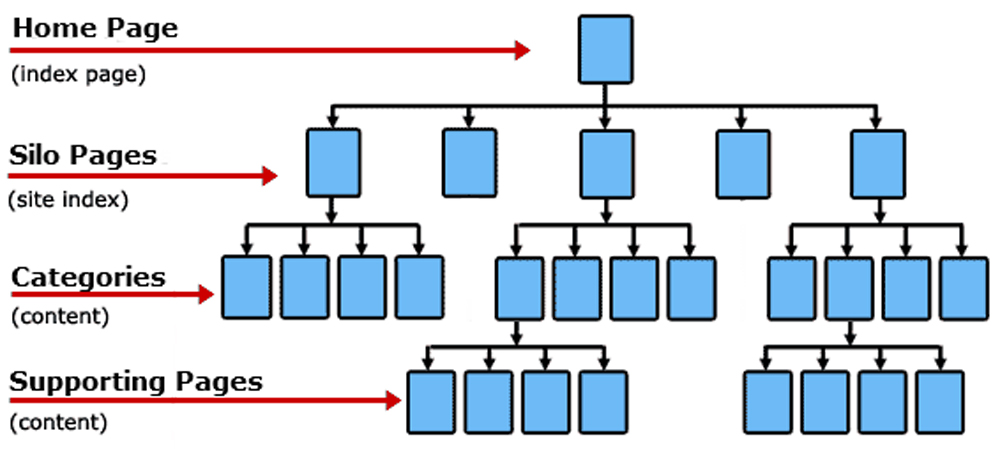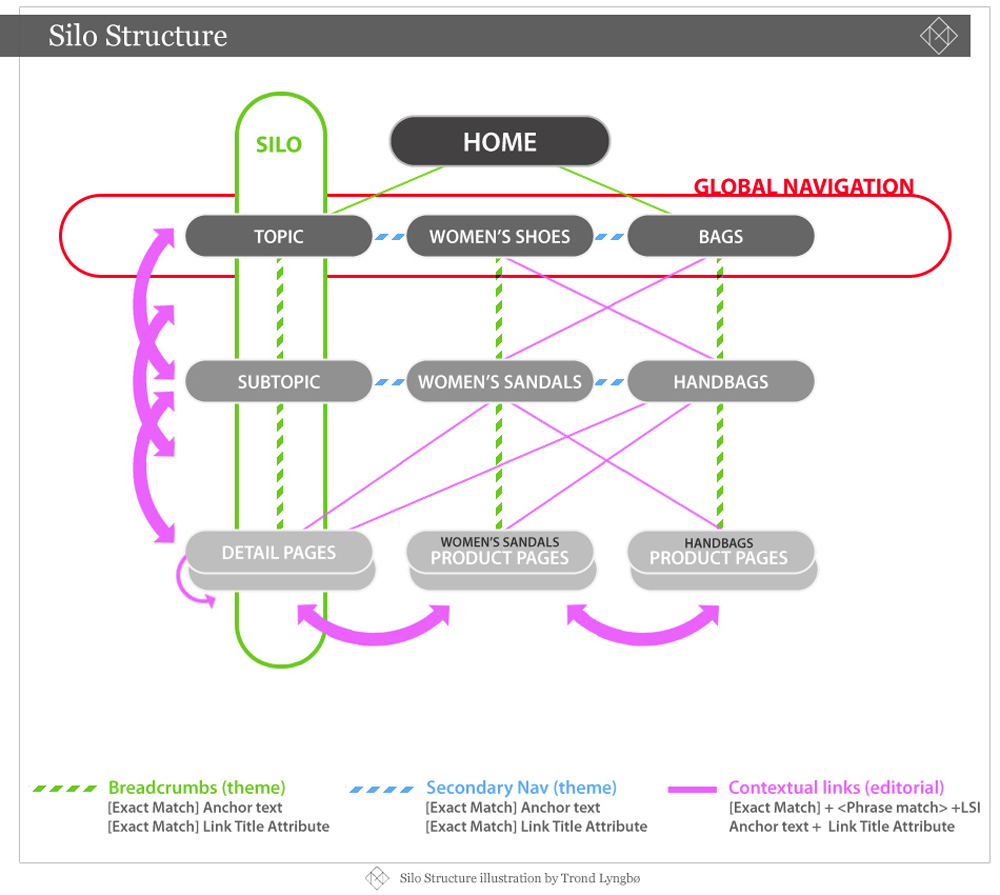A silo framework or structure is a deeper type of site architecture that is more logically arranged. The ordered collections are figured out by topics and also subtopics; topically appropriate content ought to be structurally near to other topically appropriate material. Silos are basically a way to separate your site content into classifications.
The even more topically relevant content you cover in a silo, the a lot more topically pertinent your site will remain in the eyes of Google. If you cover all of the significant search queries that individuals utilize when looking for a subject– as well as your website appears as well as is clicked for these queries– then you are the finest result, duration.

Take this additional and also cover every inquiry in every topic in a whole particular niche, and you win the net. This is how silos work– they allow you grab your main suggestions and also break them down right into smaller sized and also smaller sized groups until you have pages that are responding to all relevant individual queries.
If you believe concerning the term, “digital advertising and marketing,” as your major silo, you ‘d discover bunches of appropriate subtopics that would certainly be secondary silos such as Search Engine Optimization, Pay Per Click, content advertising and marketing, social media, conversion optimization, user experience and more. You would certainly discover more silos under each of these topics based upon the topic above.
As an example, under “material marketing” you might see extra silos such as “content approach,” “content development,” “inbound advertising and marketing” as well as “kinds of material.” Each of those can be separated into further silos, but ultimately, rather of new silos or topical ideas, you will discover a lot more material or page-level ideas that answer user queries.
Flat and Deep Silo Structures
Standard style, or “straight architecture,” is just what is generally made use of on blog sites. Several Search engine optimizations recommend a standard structure for sites, too, yet my preference is for a deep structure, also called a “upright design.”.
These further building frameworks enable less complicated grouping of material as well as less navigational mess. Deep frameworks likewise make it less complicated to understand metrics at each degree.
When is it Ideal to Write an Article?
News, worker accounts, organisation statements, various media and also enjoyment are kinds of content that ought to remain in your blog. Any sort of educational resources (or sources that match any of the content groups on your internet site) must not be a blog site.
If you’re fretted about your viewers as well as promotion, you could still post a blurb and also connect to your new pages from your blog.
A blog site usually looks separated from a web site, to the point where you’re essentially breaking your site right into two sections.
From the standpoint of a crawler, a blog could too be a separate company. Blog sites usually have a level structure where every post is on the very same degree, periodically organized by categories (which is a little better) or in some cases by date (which is generally worse).
In general, linking from a blog site to your internet site web pages resembles tossing a baseball from left area to correctly field before throwing it home– it does not make feeling. Preferably, you would go from left area to the shortstop and also then to home base, as that is the logical path.
Internal Linking
Getting back to the concept of the internet site being split, inner web links are usually not thought about with a blog site. Typically, blog sites will connect out to product/service pages, however those pages seldom link back to the blog. This one-way linking is not a good practice, but it’s all also common.
If you produce a silo structure, the framework will make your inner linking a great deal easier to adhere to. Primarily, each silo will likely connect to lower and also same-level pages, along with upper-level web pages, as the topics are in similar groups.
Don’t fail to remember to plan just how appropriate web pages will certainly connect to each various other, include web links in your material, as well as go back to old material as well as add web links to your newer material. You really have to assume ahead with silos and allow for food selection weather changes or interior navigating on web pages to fully make the most of a silo structure.
It’s strange to upload material concerning a topic on one part of a web site and also link to it on an entirely different part of the internet site, but that is normally just what blogs do. Having your material in a logical silo structure permits simpler interior connecting and much more topically pertinent teams of web pages.
Next time you’re publishing a blog site, think of the material as well as whether it’s a far better fit on one more part of your internet site.
Home Page Clicks
The most common argument I listen to against a deep website framework is that each page must be X number of clicks from the web page. My fellow Search engine optimizations, if all your web traffic is involving your web page, as well as you’re relying upon those users to click with and review your blogs, you’re doing it incorrect.
Do not take a look at it like that; effective material’s greatest vehicle driver will not be from individuals browsing your website. “A lot of clicks” is a poor debate. When creating your web site, choose the variety of topics/subtopics that makes good sense, no even more and also no much less.
This reasoning makes much less feeling for a blog, considering that the user would need to click via to the blog site, most likely choose a classification, as well as what then? Guess a page number before clicking on the write-up? Does not make good sense to me.
Excellent Results and customer service! Thanks guys!
John D.
True Blue HVAC

